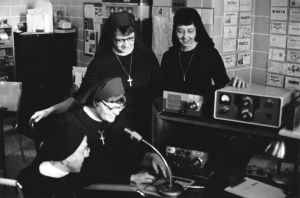Can Values Make a Difference in Healthcare?
 A few years ago (2009) I read a superb article in The New Yorker comparing the significant differences in cost and quality of healthcare across America.
A few years ago (2009) I read a superb article in The New Yorker comparing the significant differences in cost and quality of healthcare across America.
The author of the article, Dr. Atul Gawande, is a surgeon, writer, and public health researcher. At the time, he was personally investigating why McAllen, TX was one of the most expensive healthcare markets in the United States.
In McAllen, TX, Medicare spent roughly $15,000 per enrollee (2006 data), almost twice the national average. While there was lots of speculation on “why”, the bottom line was this: there was no one reason to attribute these excessive costs.
A Different Model
In his research, Gawande also looked at the Mayo Clinic, in Rochester, Minnesota. In stark contrast, the Mayo Clinic is one of the lowest-cost healthcare systems in the country. It’s also consistently ranked as one that provides the highest quality.
In Rochester, MN, where the Mayo Clinic is the dominant player, Medicare spending was only $6,688 per enrollee (2006 data). That’s less than half the cost of McAllen, TX.
What reason did Gawande attribute this amazing fact? He provides the following important and insightful statement:
“The core tenet of the Mayo Clinic is ‘The needs of the patient come first’—not the convenience of the doctors, not their revenues. The doctors and nurses, and even the janitors, sat in meetings almost weekly, working on ideas to make the service and the care better, not to get more money out of patients. I asked [CEO Denis] Cortese how the Mayo Clinic made this possible.
“It’s not easy,” he said. But decades ago Mayo recognized that the first thing it needed to do was eliminate the financial barriers. It pooled all the money the doctors and the hospital system received and began paying everyone a salary, so that the doctors’ goal in patient care couldn’t be increasing their income. Mayo promoted leaders who focused first on what was best for patients, and then on how to make this financially possible.”
What Gawande refers to as the “core tenet” is actually the Mayo Clinic’s primary value. It’s clearly stated on their website:
 Primary value: The needs of the patient come first.
Primary value: The needs of the patient come first.
The Mayo Clinic also defines an additional 8 values, along with an explanation of the source of these values:
Value statements: These values, which guide Mayo Clinic’s mission to this day, are an expression of the vision and intent of our founders, the original Mayo physicians and the Sisters of Saint Francis.
Respect: Treat everyone in our diverse community, including patients, their families and colleagues, with dignity.
Compassion: Provide the best care, treating patients and family members with sensitivity and empathy.
Integrity: Adhere to the highest standards of professionalism, ethics and personal responsibility, worthy of the trust our patients place in us.
Healing: Inspire hope and nurture the well-being of the whole person, respecting physical, emotional and spiritual needs.
Teamwork: Value the contributions of all, blending the skills of individual staff members in unsurpassed collaboration.
Excellence: Deliver the best outcomes and highest quality service through the dedicated effort of every team member.
Innovation: Infuse and energize the organization, enhancing the lives of those we serve, through the creative ideas and unique talents of each employee.
Stewardship: Sustain and reinvest in our mission and extended communities by wisely managing our human, natural and material resources.
The source of these values is clearly stated: the Sisters of Saint Francis.
Origins of the Mayo Clinic
The origin of the Mayo Clinic was recently highlighted in a Rochester-based publication: A legacy of Franciscan values for Mayo Clinic and Rochester.
- Back in 1883, one of the Franciscan Sisters of Rochester convinced Dr. Mayo to build a hospital, after a devastating tornado.
- In 1889, the Saint Marys hospital was opened and the Mayo brothers were soon famous.
- In the early years, “medical staff worked ‘elbow-to-elbow’ with sister-nurses and the sisters openly lived the essence of their Franciscan values alongside members of the medical staff.”
- Over the years, “the Franciscan values have become so much a part of Mayo Clinic and Rochester, the sisters say, that their own physical presence isn’t necessary to maintain them.”
Wow.
This should be the dream of every leader (and not just in healthcare), to have all employees embrace the organizational values even without the physical presence of their leaders.
As confirmation that these values are taken seriously, about 140 to 145 leaders of the Mayo Clinic have made pilgrimages to Assisi, Italy, where Saint Francis was born. These pilgrimages were begun by the hospital Sponsorship Board to help Mayo Clinic leaders learn about the Franciscan values firsthand.
But, for the skeptics, is it possible that this is an isolated situation? Is this model transferable?
Consider that the Mayo Clinic opened a campus in Florida in 1986, and another one in Arizona in 1987. While they did experience difficulty at first recruiting staff, and the medical staff had to adapt to the Mayo’s collaborative culture, in time they achieved the same high quality, low-cost results as the main Rochester campus.
In other words, clearly defined values can make a significant difference in healthcare. Maybe it’s time for other leaders to take notice….
What impact do you think the Mayo Clinic’s values could have on healthcare overall in America?








